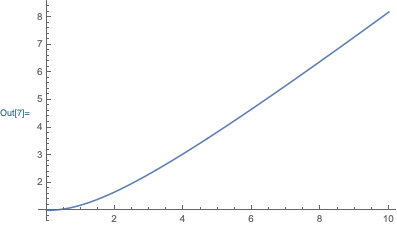I have difficulty implementing on how to specify the domain that I want for ry which is the inverse function of rho. The necessary condition is that, $\textbf{ry}$ must remain $\textbf{positive}$ for any positive or negative value of y. Also, at $y=0$, ry should have the value $\textbf{1}$. I have tried adding Refine in the code but it does not solve the problem. Note also that the InverseFunction is unable to evaluate negative values of $y$.
q = -1;
b0 = 1;
ry = InverseFunction[rho[#] &];
dry[y_] := D[ry[y], y] // Simplify
rho[r_] := Refine[(2 b0)/(1 - q) Sqrt[1 - (b0/r)^(1 - q)]Hypergeometric2F1[1/2, (q - 2)/(q - 1), 3/2, 1 - (b0/r)^(1 - q)],r > 0] // Simplify;(*throat profile*)
Any help is appreciated. Thanks

